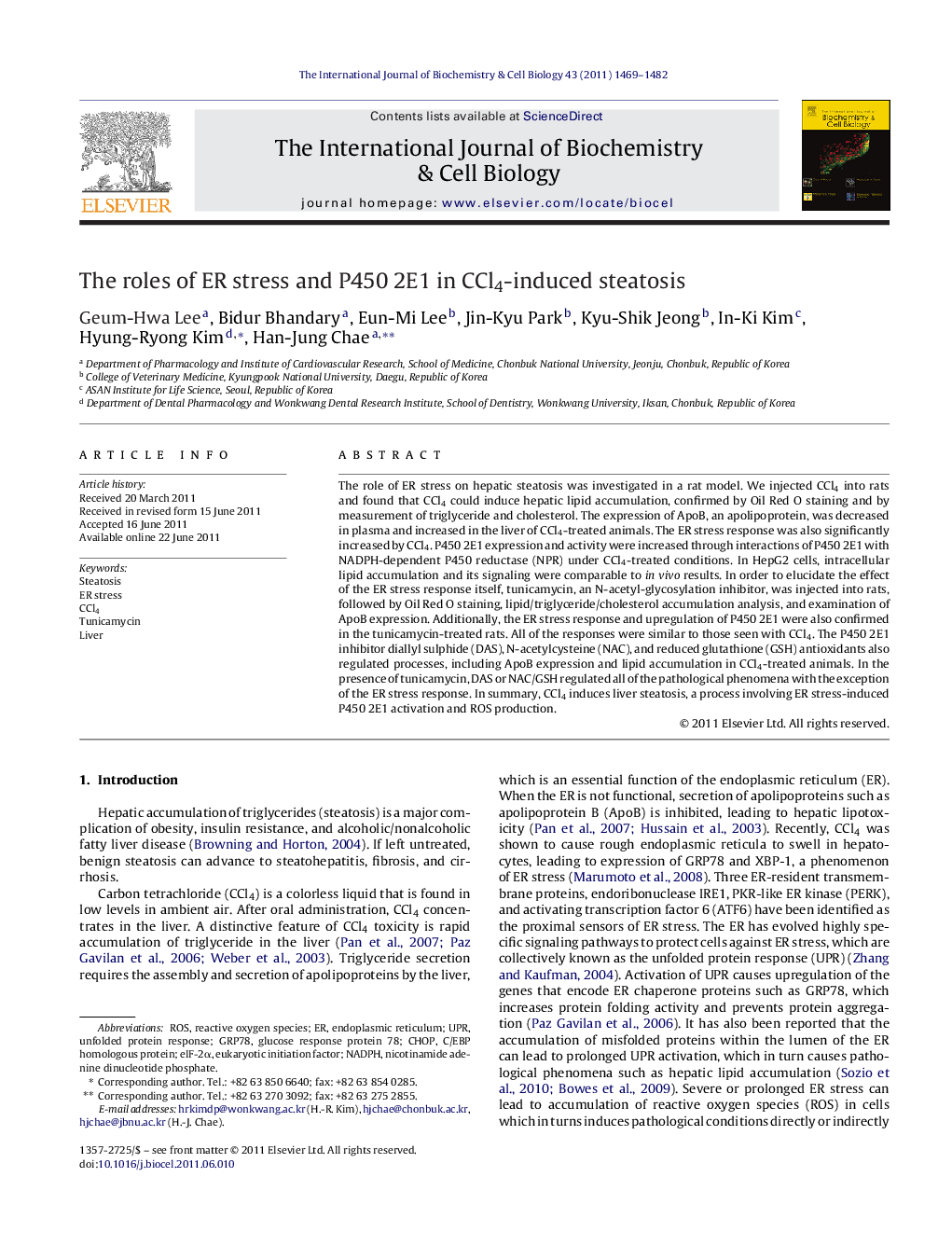| Article ID | Journal | Published Year | Pages | File Type |
|---|---|---|---|---|
| 1983935 | The International Journal of Biochemistry & Cell Biology | 2011 | 14 Pages |
The role of ER stress on hepatic steatosis was investigated in a rat model. We injected CCl4 into rats and found that CCl4 could induce hepatic lipid accumulation, confirmed by Oil Red O staining and by measurement of triglyceride and cholesterol. The expression of ApoB, an apolipoprotein, was decreased in plasma and increased in the liver of CCl4-treated animals. The ER stress response was also significantly increased by CCl4. P450 2E1 expression and activity were increased through interactions of P450 2E1 with NADPH-dependent P450 reductase (NPR) under CCl4-treated conditions. In HepG2 cells, intracellular lipid accumulation and its signaling were comparable to in vivo results. In order to elucidate the effect of the ER stress response itself, tunicamycin, an N-acetyl-glycosylation inhibitor, was injected into rats, followed by Oil Red O staining, lipid/triglyceride/cholesterol accumulation analysis, and examination of ApoB expression. Additionally, the ER stress response and upregulation of P450 2E1 were also confirmed in the tunicamycin-treated rats. All of the responses were similar to those seen with CCl4. The P450 2E1 inhibitor diallyl sulphide (DAS), N-acetylcysteine (NAC), and reduced glutathione (GSH) antioxidants also regulated processes, including ApoB expression and lipid accumulation in CCl4-treated animals. In the presence of tunicamycin, DAS or NAC/GSH regulated all of the pathological phenomena with the exception of the ER stress response. In summary, CCl4 induces liver steatosis, a process involving ER stress-induced P450 2E1 activation and ROS production.
